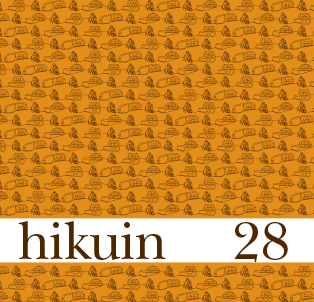Keramikken og ovnen fra Hellum samt en beskrivelse af brændingsforløbet
Abstract
The pottery and kiln from Hellum and a discription of the firing
By Annette B. Bibby & Inge Sell
Duplicating the Hellum kiln consists of reconstructing both the kiln itself and the pottery vessels to be fired in it. The original vessels are all spherical pots of different sizes, produced without a fast wheel and unglazed. The reconstructed pots are therefore built in the lap, and when the clay is sufficiently stable the outer surface is clapped with a clapping bat. After finishing the rim by bending it out over the righthand thumb, the pots are left to dry completely before being fired in the kiln. The kiln consists of an underground firing chamber with a narrow stoking channel and a firing chamber above ground. To build the floor of the firing chamber a large stone was placed in the middle of the firing chamber, with thick clay bars spreading out to the outer walls. For the reconstruction of the kiln the building site is dug and the floor and outer walls of the firing chamber are moulded in clay. The large stone is placed in the middle and covered with clay. Then the difficult task of building the floor of the firing chamber begins. Thick bars of clay are arched between the stone and the outer walls. The finished floor looks like a wheel with thick spokes. Finally the walls of the firing chamber are moulded, narrowing upward and leaving an outlet for smoke. Stacking produces a problem, because some of the pots have to hang, firmly wedged by those standing on the bars, over the holes down to the firing chamber. Taking great care in placing the pots solves this problem, and the rest of the stacking is easily done. The firing starts very slowly with a small fire in the stoking channel. After two hours with moderate feeding, the fire is allowed to burn more freely and wood fuel and embers are pushed into the fire chamber. A problem with steam in the outlet smoke from very wet fuel forces us to keep the outlet open for longer than planned, but after five hours’ firing it is narrowed to ten by ten centimetres. After a further five hours’ of firing the temperature reaches 820 degrees Celsius, and a glance down into the kiln shows the pots glowing a translucent red. Thereafter the kiln is closed.
References
Kock, Jan: Hellum-potter, Skalk 1984: 3 s. 9-13.
–: Ler i flammer, Skalk 1989: 3 s. 10-15.
Liebgott, Niels-Knud: 900 grader C, Skalk 1975: 4 s. 3-8.
Reinholdt, Helle: Pottemager ved Hærvejen, Skalk 1986: 1 s.12-15.
Schmidt, Lone: Pottemagere, Skalk 1977: 3 s. 7-11.
Downloads
Published
How to Cite
Issue
Section
License
Forfatter og Forlag.





